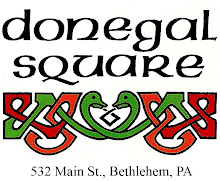
Saint David's Day (Welsh: Dydd Gŵyl Dewi Sant) is the feast day of Saint David, the patron saint of Wales, and falls on March 1st each year. The date of March 1st was chosen in remembrance of the death of Saint David on that day in 589, and has been celebrated by followers since then. The date was declared a national day of celebration within Wales in the 18th century.
In 2003, in the United States, St. David's Day was recognised officially as the national day of the Welsh, and on March 1st the Empire State Building was floodlit in the Welsh national colors, red, green and white. It is invariably celebrated by Welsh societies throughout the world with dinners, parties, recitals and concerts.
To celebrate the day, people wear a symbol of either a leek, or daffodil. The leek is patriotic, arising from an occasion when a troop of Welsh were able to distinguish each other from a troop of English enemy dressed in similar fashion by wearing leeks. An alternative emblem developed in recent years is the daffodil, used and preferred over the leek by the British Government as it lacks the overtones of patriotic defiance associated with the leek.

Cardiff
The 2010 St David’s Day celebrations in Cardiff will include concerts, a parade and a food festival. Events started on February 26 with the third annual Really Welsh Food Festival in the city centre.
Soldiers from the Royal Welsh Regiment changed the guard at Cardiff Castle's south gate on February 27 and 28. Visitors to the castle on March 1st will receive a free tube of daffodil bulbs to commemorate the day. On St David’s Day, the seventh National St David’s Day Parade takes place in the city centre. Following the parade, a number of Welsh entertainers will perform from a bandstand and in the evening Cardiff Central Library will provide free entertainment and food. St. David's Hall will stage its traditional St David’s Day concert in the evening of March 1st with the BBC National Orchestra of Wales, BBC National Chorus of Wales and youth choruses.



